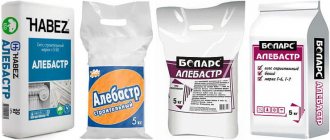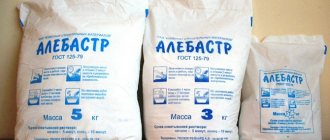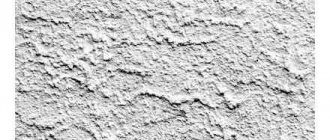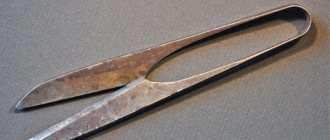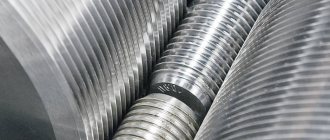We want to paint the facade of the house with relief bas-reliefs. How to properly pour gypsum into relief forms so that there are no voids?
Casting various figures from plaster is actually much easier than it might seem. If you get the hang of it, this will be the most common process for you. After you have purchased or cast a mold for plaster yourself, and learned how to dilute plaster in the required proportions, the following should be noted:
- It is not necessary to lubricate the silicone mold for plaster, since, in theory, it should not stick to it. To be on the safe side, it is, of course, better to lubricate the mold with a special release agent. If there is no special lubricant, you can use regular vegetable oil, the product is the most affordable. Take a brush and apply a thin layer (decide for yourself whether you need this or not),
- The plaster should be poured into the mold slowly to prevent bubbles from forming. If the mold is very large, to speed up the procedure, plaster can be poured onto some kind of board; bubbles should not form as they flow down it (of course, you need to get used to it),
- pour only part of the plaster, after which you need to use a brush in this mass to go over the entire form, as if spreading the plaster. Thus, we, as it were, remove possible bubbles at the bottom of the form (and therefore on the front part of the future molded element),
- after the bubbles have been removed with a brush, the form must be subjected to vibrations, in other words, shake the form. In factories and people who are involved in this business more professionally, there are special machines that vibrate when turned on. If you wish, you can make such a machine yourself. After this, fill in the remaining plaster.
All of the above steps must be done fairly quickly so that the plaster does not have time to set, especially if you prepared a thick composition.
If the stucco elements are large, they must be additionally reinforced with mesh and then covered with water-repellent compounds so that in wet weather the plaster does not begin to crumble over time.
I advise you to visually see the procedure for pouring plaster into silicone molds:
Not everyone knows how to dilute plaster for beadwork or for making small sculptures. The technology for preparing the solution is quite simple. The main thing is to know in what ratio the components are mixed. It is worth noting that gypsum is the main material for making crafts.
Read also: How to make a good knife with your own hands
In what proportions should plaster be diluted for pouring molds?
Gypsum is often used to create various crafts. And in this case, it is usually poured into molds, where the solution hardens and takes on the desired shape. When talking about a mixture of mortar for a similar fill, we can call the proportions of gypsum and water 7:10. The solution of this mixture is quite liquid and penetrates perfectly into all places of the form, which is what we need. But with all this, the finished product can turn out to be very brittle, so it is best to add a couple of spoons of PVA glue to the resulting solution before pouring.
If we are talking about gypsum for topiary, then the solution mixture should be similar to thick sour cream, because the watery solution will take longer to harden. By the way, it is best to use alabaster to make such a solution, because it hardens especially quickly.
What to add to alabaster so that it does not harden?
By dissolving alabaster in wallpaper glue, the hardening time can be “stretched” by another 20 minutes. Table vinegar. Thanks to vinegar, the hardening of the mixture can be increased by 50 minutes. It is enough to add vinegar to the solution in a ratio of 2 tbsp.
Interesting materials:
What does the expression Russia is a rule-of-law state mean? What does the expression Russia has become the gendarme of Europe mean? What does the expression most tsimus mean? What does the expression checkmate mean in life? What does the expression shehzade mean? What does the expression decline by cases mean? What does the expression You are my swan song mean? What does the expression the die is cast, the Rubicon is crossed, the bridges are burned, mean? What does the statement “Moscow the third Rome” mean? What does this phrase mean? What does high style of speech mean?
The correct ratio of gypsum and water is the key to success
If we want to get a strong gypsum solution, then it is best to use a ratio of two parts powder to one part water. In general, in the vast majority of cases, gypsum dough is required to be softer. And in order to get an average gypsum solution, one and a half kilograms of powder will require a liter of water. Often the work requires something thinner, and in this case a kilogram of gypsum per liter of water will be a good option. By the way, when preparing honey gypsum , water and powder are taken in approximately equal quantities.
life hacks. How to make plaster castings. Gypsum G16.
Review|Which plaster is better
Benefits of working with plaster
Gypsum differs from most materials for creating original crafts due to a number of advantages:
- Environmentally friendly material.
- Safe for the master.
- Easy to prepare solution.
- Affordable price. A novice craftsman may wonder where to buy plaster for crafts, but the answer is quite simple. In any pharmacy, hardware store, craft stores.
- Rapid hardening of the solution.
- With optimal mixing, the working solution has an elastic structure.
- Availability of a large number of forms and templates for making garden figures, crafts, and souvenirs.
Today, craftsmen have access to a huge range of models to work with: animal figurines, toys, original mushrooms with caps, flowerpots and other forms for flowers. For all options there are detailed instructions, photos of finished crafts, and educational video lessons for work.
Some rules for diluting gypsum mortar
First, we will need containers, and it is best to take a disposable one. The reason is ordinary - in the case of reusable installation, when washing such containers, we risk clogging the drain pipes. Of course, the container must be clean. Gypsum should be poured into water sparingly. In all this, it is best with a stainless steel spatula, or something made from hard wood. As for water, it can be tap water. Try not to stir the solution for too long, because in the end the finished product or layer of plaster may turn out weak.
Regarding mixing, it is important to follow a certain technique. The main thing is to prevent the formation of lumps. To do this, you need to moderately distribute the gypsum powder over the surface of the water, then wait a couple of minutes until the powder is saturated with the liquid. This is followed by a period of intensive stirring for 2-3 minutes. The goal is to make the solution very homogeneous and also to remove most of the air bubbles from it.
Crafts for home interior
Not only the garden, but also the room can be decorated with plaster products, which are very easy to make with your own hands. To create interior decor, you can use combinations of gypsum with stones and other tandems of materials. You can practice creating crafts by building a house from plasticine and plaster.
To make a house you will need:
- Gypsum mixture.
- Plasticine.
- Vegetable oil.
- Sandpaper.
- Dye.
- Stationery knife.
To create a house you will need a plasticine mold, which you should sculpt yourself. You will need a lot of plasticine, so you can use cheap one-color material, which is used to create sculptural sketches.
The correct mixture can be prepared by mixing seven parts of the powder with ten parts of clean water. Having fashioned a mold for the house, it is filled with plaster mixture.
It is worth waiting until the liquid hardens. After this, carefully remove the plasticine. You should act with care, since the damaged form will have to be redone.
When the last particles of plasticine have been removed, the resulting product should be prepared for the next pour. To do this, the gypsum craft is generously lubricated with vegetable oil. It is important to coat every millimeter of the mold so that the fresh mixture does not mix and stick to the existing workpiece.
When the poured mixture dries, the oil will allow you to remove it from the mold. The finished craft may need some adjustments. Using a blade, cut off excess parts. Use a sharp object to draw windows and doors.
Sand the craft with fine-textured sandpaper. The sanded surface of the sculpture can be painted and decorated in any way.
How to dilute plaster for crafts?
Often, those who want to take up a similar hobby do not know how to mix plaster for crafts and the proportions that must be observed. Let's look at some tips
An easier way is to simply dilute gypsum with water in a ratio of 7:10. Such a solution will allow you to make crafts that are easy to process. But such products will not be strong enough and will simply break. Therefore, to ensure greater strength, 2 tablespoons of PVA glue should be added to the purchased solution.
Tip: when making a solution, gypsum should be added to water, and not the other way around. This sequence eliminates the occurrence, and, consequently, the inhalation of gypsum dust.
The second method of creating gypsum mortar is more difficult, but makes it possible to produce more durable products that will not lose their original appearance over time. When using this method, gypsum is diluted with water and slaked lime in proportions of 6: 10: 1, respectively.
How to dilute plaster and later make beautiful crafts from it. Photo
Can plaster be used instead of putty?
You can simply seal the grooves with plaster, install socket boxes, etc. etc., but the surfaces are not plastered with plaster. It can be one of the components of the plaster mixture and nothing more.
Interesting materials:
What region is 337? What region is in Grodno? What is the rating of Post Bank? What result is counted when performing a running long jump? What is the native language in China? How tall is Milana Nekrasova in 2022? What dating site? What is the largest caliber of a tank? What is the largest island in Great Britain? What is the largest plane in GTA 5?
Gypsum and alabaster: similarities and differences, areas of application
Gypsum and alabaster are varieties of the same mineral and have a general chemical formula (CaSO₄·2H₂O). This natural mineral belongs to the group of sedimentary rocks. The difference lies in the arrangement of crystals, with the help of which gypsum has a fibrous structure, and alabaster has a grainy structure. Simply put, gypsum powder has a finer grind than alabaster powder, which is why its scope of application is wider.
Everyone saw the snow-white fixing bandages that are applied for fractures. They contain gypsum. Dental technicians also cannot do without this material: they need it to cast models of jaws from impressions. For these purposes, both ordinary honey gypsum and durable α-gypsum or supergypsum are used. This variety is obtained by calcining gypsum powder in an airless environment. Supergypsum contains special additives, allows you to make stone-hard, clear castings, and for this it is valued by dental technicians and jewelers.
According to the degree of grinding, this material is divided into three groups:
- hard – I;
- medium – II;
- narrow – III.
Another parameter for assessing gypsum is strength. Different brands may have different compressive strengths, which are indicated by a number (G-2, G-13 or G-25). There are 12 such numbers in total. The price of the material depends on its strength, degree of cleaning, and the presence of special additives.
Construction gypsum for plaster or putty grade G-5 costs 12 rubles/kg, and the cost of dental or jewelry can reach 500 rubles/kg. Sculptural plaster for creativity occupies a middle position between these two types and will cost the buyer approximately 110 rubles/kg.
For topiary
Topiary is the name given to artificial potted trees made using various methods. Instead of soil, plaster is poured into the pot, in which the trunk or branches are fixed. How to dilute plaster for a topiary base? There are two ways to mix gypsum mortar for topiary:
Types of alabaster
Different types of alabaster, as a natural mineral for the production of building gypsum, are mined in many countries.
Gypsum alabaster serves as the main raw material for the production of gypsum. As a result of its processing at high temperatures in special devices, powder-like binder gypsum for construction is obtained. If it is ground more finely, the resulting powder can be used for molding operations. Specially purified raw materials are used to produce gypsum for medical purposes.
The setting time varies:
- fast-hardening, which begins to harden after a couple of minutes and finally sets after a quarter of an hour
- normal hardening with the onset of setting no earlier than six minutes and final hardening after half an hour
- slow-hardening, which begins to set no earlier than twenty minutes
Preparing for work
When working with alabaster, half of the success depends on the quality of preparation, and specifically on the selection of containers and tools. To make the process easier, consider the following principles.
READ The best way to insulate a foam block house from the outside
It is convenient to seal small portions of AlebAstra in nylon buckets or small rubber containers
Often, builders use halves of ordinary children's balls of suitable diameter.
A spatula is optimal for mixing “small doses” of alabaster consistency.
line with a solid piece of cellophane, dense and without holes, pin the “tails” to the edges of the container so that the cellophane does not move while stirring; After use, the film is simply removed from the bucket and thrown away.
It is convenient to mix the solution with a construction mixer, or, if it is not available, with a drill with an attachment.
About the intricacies of growing alabaster
The main feature of water mixtures with alabaster is their rapid hardening. This circumstance should be taken into account before starting to breed it. In addition, the speed of setting leads to the formation of hardened mixture residues in the containers underneath. Therefore, sometimes it is not easy to remove them from metal buckets and tanks.
To save yourself from mistakes when breeding alabaster you need to:
- prepare the mixture in small portions to prevent it from hardening earlier than after five minutes
- for dilution, it is better to use containers made of rubber or silicone, which are easy to clean
- place a plastic bag inside the container, the top edge of which is securely fixed before stirring
- strictly observe the ratio of alabaster and water to prepare a specific solution
- pour dry alabaster into water gradually, stirring constantly until a mass is obtained without lumps and bubbles
At what proportions is building plaster obtained?
Construction plaster can be prepared for various finishing operations. For each of them, regulatory documentation provides for certain requirements for the preparation of asbestos solution. So, if it is intended to be used to fill grooves when performing work related to laying electrical wiring, one kilogram of alabaster should be diluted in half a liter of water.
When preparing a plaster mortar based on alabaster and lime, a kilogram of dry powder is diluted in 650 grams of lime mortar or water. A liquid putty solution, with the help of which unevenness on the walls is leveled, a kilogram of dry building plaster is poured into a liter of water.
Recommendations for growing alabaster
The main thing when diluting alabaster is to pour the dry mixture into water. If this is done in small portions while stirring, the formation of lumps is minimized.
However, a high-quality solution is also ensured:
- using mechanical tools in the form of a drill with stirring attachments
- moistening the alabaster while stirring by hand, after which it is intensively stirred with a spatula
- inadmissibility of diluting a mixture that has set with liquid due to loss of quality
How long does it take for products made of plaster and alabaster to dry, why do they crumble?
Gypsum and alabaster are fast-hardening materials. Hardening begins soon after the powder comes into contact with water. This is not very comfortable because it greatly limits the time frame for work. Depending on the purpose, you can choose a brand with a certain hardening speed.
According to the setting time, gypsum can be divided into three groups:
- quick-setting (the process begins at 2 minutes and ends at 15 minutes);
- medium setting (from 6 to 30 minutes);
- slow-setting (more than 20 minutes).
Regardless of the type of material, three factors influence the speed of its hardening:
- water temperature;
- kneading technique;
- presence of additives.
If during the work you need to extend the time during which the mixed solution will remain plastic, you can add washing powder at the rate of 1 tablespoon per 1.5 kg of dry plaster. Another available option is Bustilat wallpaper glue, which is added during mixing.
The hardening time is also influenced by the speed and intensity of the kneading: the more actively and longer you stir the gypsum slurry, the faster it will set. A balanced option, in which plasticity is better preserved, is to quickly stir the powder with water until the lumps completely disappear. Those who work with gypsum say that when mixed by hand, it hardens more slowly than when mixed with a construction mixer.
The development of mixing also affects strength. In order for the purchased casting to crumble less, it is not recommended to stir the solution very actively. First, the powder is poured in a thick, even layer on the surface of the water, allowed to absorb the water, then gently mixed with a spatula in several movements until the lumps disappear.
Thick filling in a pot
Thick gypsum fill is perfect for large, wide or shallow containers and is appropriate if you need to continue working on the tree of happiness as quickly as possible: the solution hardens in 3-4 hours.
Pour dry gypsum into the pot, slightly below the required level. Slowly add warm water, knead the solution until a thick, creamy mass is obtained. We insert the topiary trunk in a suitable position. It is very important not to overdo it with water: in a watery fill the trunk will collapse and the drying time will increase.
Carefully how to fix topiary in a pot: secrets of filling and fixing without alebAstra - with photos and video master classes!
We would like to paint the façade of the house with relief bas-reliefs. How to properly pour gypsum into relief forms so that there are no voids?
Casting different figures from plaster is actually much easier than it might seem. If you get the hang of it, it will be the most mundane process for you. After you have obtained or cast a mold for plaster without the help of others, you have learned how to dilute plaster in the required proportions. The following must be emphasized:
- It is not necessary to lubricate the silicone mold for plaster, because, in theory, it should not stick to it. To be on the safe side, it is naturally better to lubricate the mold with a special release agent. If there is no special lubricant, you can use ordinary vegetable oil, the product is the most affordable. Take a brush and apply a thin layer (decide for yourself whether this is necessary for you or not),
- It is necessary to pour the plaster into the mold slowly to avoid creating bubbles. If the mold is very large, to speed up the procedure, gypsum can be poured onto some kind of board, flowing down it should not create bubbles (naturally, you need to get used to it),
- pour only part of the plaster, after which you need to go over the entire form with a brush, as if smearing the plaster. In this way, we seem to be removing possible bubbles on the bottom of the form (and therefore on the front part of the future molded element),
- After the bubbles have been removed with a brush, the form must be subjected to vibrations, in other words, shake the form. In factories and people who do this work more skillfully, there are special machines that vibrate when turned on. If you wish, such a machine can be made without the help of others. Then fill in the remaining plaster.
Read also: What is a granny wrench for?
All the steps listed above must be done quickly enough so that the plaster does not have time to set, especially if you prepared a thick composition.
If the stucco elements are of enormous size, they must be additionally reinforced with mesh and then covered with water-repellent compounds so that in humid weather the gypsum does not begin to crumble over time.
I advise you to visually see the function of pouring plaster into silicone molds:
Not everyone knows how to dilute plaster for beadwork or for the production of small sculptures. The development of making the solution is quite ordinary. The main thing is to know in what ratio the components are mixed. It should be noted that gypsum is the main material for the production of crafts.
Properties of alabaster
The main property of alabaster is the ability to quickly harden when mixed with water. This creates a durable and stone-like surface. Thanks to these properties, it is widely used in various branches of construction, industrial production, and art. It is used to seal seams in surfaces, holes and irregularities.
When carrying out electrical wiring, wires and cables are secured with alabaster in specially prepared grooves. They are used to putty on walls and other surfaces of premises and various building structures.
Experienced craftsmen have their own techniques for prolonging the action of the finished solution. According to one of them, a small amount of wallpaper glue is added to a container with such a solution.
After this, it is tightly covered with a piece of plastic film. Craftsmen claim that this makes it possible to increase the setting time of the alabaster mixture without loss of quality.
Application area of gypsum casting
Gypsum casting is used both at industrial enterprises for the production of interior decoration parts, and in designer workshops. Craftsmen cast a very wide range of plaster
- Author's interior decor elements
- Figurines and even huge sculptures, right up to models for the next metal casting
- Small scenery
- Toys
- Parts for scale models of equipment
The scope of implementation is not limited to this list. Craftsmen are inventing more and more new areas for the use of gypsum casting - wherever it is necessary to make parts with complex surfaces and relief, and the requirements for strength and wear resistance are not critically necessary.
If you find an error, please select a piece of text and press CtrlEnter.
Production of a matrix for creating molds from polyurethane or silicone, formoplast, liquid plastic
The completed model must be glued to some base in order to make a matrix from it. A good option would be to use chipboard as a stand. The finished model must be glued to the chipboard using silicone sealant. But this can only be done on the glossy side of the stand.
For gluing, silicone sealant is taken and applied to the back side of the prepared model. All edges and corners are covered well. When turning the stone over, press it firmly onto the chipboard tray. Next, use a spatula to carefully go over the joints, making sure that all air bubbles disappear. There is no need for excess air when filling with polyurethane or silicone. After covering, the workpiece should be left until completely dry. After which, it was time to build the sides for the matrix. The height of the walls should exceed the height of the glued stone. The material for this can be plastic, iron or aluminum corners. At a distance of approximately 1.5 cm from the finished model, the corners must be screwed using self-tapping screws to the chipboard around the entire perimeter.
READ Which mop is best for cleaning floors
It is important, after screwing, to carefully go through all joints and corners with silicone sealant, again double-checking the reliability and tightness of the structure. Otherwise, flowing polyurethane or silicone, which has the ability to seep into even the most compact cracks, will flow out of the matrix. To ensure that all the material dries well, it is better to leave the matrix to dry (about 12 hours). It is recommended to use silicone sealant for aquariums. Its main feature is the elimination of shrinkage or cracks that often appear after drying. A matrix treated with such a sealant will last for many years without problems.
Life size mask
A mask is an interesting plaster craft for home, which is not at all difficult to make with your own hands. To do this, you will need a standard set of materials, as well as a patient model, which will become the “mold” for the product.
To create a mask you will need:
- Plastered gauze fabric. It can be replaced with regular plaster.
- Gypsum.
- PVA glue.
- Petrolatum.
- Textile.
- Containers.
- Water.
- Paints and brushes.
Before starting work, apply a thick layer of Vaseline to the “model’s” face. Particular attention is paid to the eyebrows. Insufficiently lubricated hairs can make it difficult to remove the mask.
Gypsum powder is mixed with water. The mixture should be prepared somewhat thinner than for conventional crafts. If there is a gauze bandage, cut it into small pieces and soak in water. Applied to the face, they instantly set, after which the next layer of plaster can be applied.
Apply carefully to the area around the eyes. Accidents will not improve your mood. Apply the mixture, avoiding the mouth, nostrils and eyes. The layer of the mixture on the bridge of the nose and cheekbones should be slightly thicker. This will provide the mask with additional support and density.
When the mask has set a little, it is carefully removed. The product is very fragile, so there is no need to rush. To strengthen the product, you can apply several more layers of plaster using a brush. Liquid gypsum can smooth out all the unevenness on the surface of the craft.
After applying several additional layers, the mask is sent to a preheated oven. The oven is heated to 180 degrees. The mask is baked for half an hour.
After baking, the mask is sent to dry in a cool, dry place. She will “leave” for about a day. After this, you can begin to design it.
First, the surface of the product is primed with PVA glue or painted with white paint. Before drawing, you can make a sketch with a simple pencil. Next, the mask is painted, using the drawing of the hero you like as an example. For example, an angel.
Attach the finished mask to a wire or wooden stick using hot glue.
Mold making
The simplest small mold for plaster crafts is prepared as follows. A gypsum solution is poured into a small box (cardboard box) in a layer of about 1 cm. The box is needed so that the plaster does not spread. When it hardens, a model pre-lubricated with oil or petroleum jelly is placed on this layer.
Then the box with the model is filled to the middle of the model with plaster - you get the lower part of the mold. To make it easier to combine the halves of the molds later, special “locks” are made, for which the corners are cut to a shallow depth on the semi-hardened lower half of the mold. The frozen half of the mold along with the model should be thoroughly greased with oil or Vaseline. Now, finally fill the model with fresh plaster mortar approximately 2 cm above the model level.
When the form has hardened, but has not yet completely dried, the halves should be separated using a thin knife (blade). In the mold, you need to use a knife to cut out the foundry in the form of a funnel, reaching all the way to the model itself. The model is removed. The mold halves are ready.
If you take good care of the mold, you can make up to 60 castings in it. These molds are also convenient because, unlike plaster molds, they do not allow you to clean the seams on the casting, except for the side seam.
Using this pattern you can make any figurine from alabaster
First of all, to cast a plaster craft, you will need a mold. A budget option is to use plastic bottles, old toys, dishes, etc. Of course, the list of possibilities is limited and you will have to rack your brains to find suitable material. It is much easier to use ready-made children's molds for plaster or sand. Large silicone molds that are used in production are too expensive. If you really want, you can make a silicone mold yourself, as the following video describes. The material has limited strength and relatively large crafts are reinforced with mesh or wire. To save material and reduce weight, plastic containers are placed inside the figure. A special plaster intended for casting sculptures is stronger than alabaster and building plaster. To increase strength, PVA glue can be added to ordinary alabaster.
For ease of manufacturing and painting, figures are often made in the form of separate parts. The parts of the craft are fastened together with glue or alabaster solution.
To make it easier to remove the finished figure from the mold, it can be coated with a water solution of liquid soap and vegetable oil. There should be twice as much soap as oil. The resulting mixture is diluted with five portions of water.
DIY silicone molds
In construction, molds are often used to produce various products and products. The most basic of them are polyurethane and silicone. gypsum into them , they are also used to make artificial stone. All this can be done with your own hands. Even if it seems that you need to have some knowledge, this is a misconception. This article will tell you in detail how to make a polyurethane mold, a mold for pouring plaster, silicone, a mold for pouring plaster, concrete. He will also teach you how to make your own matrix for producing molds from silicone or polyurethane. The most important thing is to understand how to build, according to the rules, a practical template for a matrix that is suitable for materials such as polyurethane, molded plastic and silicone.
Creation of artificial decorative stone from gypsum or concrete using polyurethane molds
Unnatural stone, at the present time, is a good, profitable business. To open your own business, with the prospect of further growth, you do not need a lot of cash investment. Unnatural stone can be easily made with your own hands using all technologies. But first, it is important to have a room with a suitable temperature so that work can be carried out year-round.
The production of unnatural stone requires good, high-quality forms, which cannot be obtained without a matrix. The manufacture of a matrix sample must be approached very responsibly, because the strength of the final product depends on it.
Some people consider the process of making artificial decorative stone at home impossible. But thanks to desire and desire, everything becomes possible. It is better materials and combine them with some additives. For example, the setting time of silicone and its fluidity can be adjusted using catalysts.
Features of the material
Gypsum or alabaster has a number of properties that predetermine its use in construction and medicine. It is also great for making garden figurines with your own hands. Even large sculptures are made from alabaster. The use of forms allows you to accurately copy the most complex volumetric figures. Working with the material is not physically difficult, so many women are interested in creating art with plaster. Professionals have already made a considerable number of alabaster crafts for the garden.
Plaster figurines for the garden for every taste
It should not be forgotten that alabaster is a rather fragile material that is afraid of moisture. It is better not to test products made of alabaster for strength. They must be protected from water with paints and varnishes. In the autumn and winter, plaster figurines are stored in a dry room.
How to make a plaster mold for making similar products.
Today I will tell you how to make a plaster mold for making similar products. With its help, you can easily fashion a set of original buttons, beads for a necklace or various elements for jewelry. Fridge magnets work very well.
What you need to make the mold:
A model of a product sculpted from plasticine (or raw clay) on a flat platform. A piece of plastic or thick cardboard is suitable as a platform. The photo shows the finished model and the tool with which it was made.
Please note that there should be no places with negative angles on the model. The figure shows a schematic cross-section of the model. Circled in red are places that will prevent the mold from separating from the model, and during the manufacture of products they will be torn at the moment of removal from the mold.
Cups for measuring plaster and water, as well as for stirring the mixture. A spoon or stick (for example, the handle of a brush) can be used as a stirrer.
Brush. Preferably with long soft pile (pony).
Plasticine. It is quite possible to use a child's one. Although model plasticine is better - it is more elastic and stable. Instead of plasticine, you can use raw clay prepared for modeling.
So, you have made a model of a button and now the question is about making a small edition. Let's say you need 5-10 identical buttons. Let's start making a form that will help you solve this issue.
From plasticine on a substrate around the model we sculpt a side, which is called formwork. This edge will keep the liquid plaster from spreading across the table and spilling onto the floor. You should have a sealed bath. The formwork must be significantly higher than the highest point of the model so that the form is solid and has sufficient strength. The difference in height is determined by the size of the model; the more space the model occupies, the higher the side should be. For the cross in the photo, a side height of 2 cm is sufficient.
For our model, we had to take a large piece of white plastic and, using plasticine, also level the floor in the bathtub with a black backing so that there were no steps on the form. A wooden stack was used in the work, but you can do without it.
Using a measuring cup, pour into the container in which we will mix the plaster the amount of water that can fill approximately half of the bath with the mold.
We used a yogurt cup as a measurement. You need to remember the amount of water, it will come in handy in step 3.
Gypsum is diluted with water in a 1:1 ratio. Using a measuring stick, the same amount of plaster is measured as water. You can take a little more gypsum, this will have a good effect on the strength of the form. The measure must be dry so that drops of water do not get into the bulk of the plaster (otherwise you may end up with frozen lumps, which will then interfere when pouring other forms). Carefully pour the gypsum, lightly tapping the measure, into a mixing container. There is no need to rush or fuss especially, since we have time to mix the plaster well.
READ Liquid rubber in a can for waterproofing
Thoroughly mix the plaster with water for 2-3 minutes until a homogeneous mass is formed.
We take the brush in our working hand and begin to pour the plaster into the bath with the model. At the same time, using a brush, we actively disperse the plaster over the surface of the bath and the model. It is best to take a few drops of plaster with a brush and “paint” the surface of the model with them. The more actively you work with the brush, the fewer air bubbles will form on the surface of the mold.
When the level of the poured plaster is level with the upper plane of the model, you can use a brush to push more plaster onto the model and carefully “paint” its surface. And then pour in the remaining plaster.
After the bath is completely filled with plaster, it is worth once again carefully “painting” the surface of the model by dipping the brush directly into the plaster in the bath.
It is also recommended to shake the mold slightly. You can tap your fingers from below the plate. This removes air bubbles from the plaster, which can lead to the formation of cavities and large pores on the working surface of the mold.
And leave the filled form for a while. GVVS-16 gypsum hardens (sometimes they also say “stands up”) after 30 minutes. Construction mixtures may take longer to harden. You can determine the hardness of the surface by simply feeling it. Usually the form is ready for further work after it warms up - a sign of a chemical reaction of water binding. While the mold is hardening, you need to thoroughly rinse the brush of plaster, otherwise the hardened plaster will damage it.
After the form has hardened, you can remove the formwork (side). Carefully and decisively separate the side and put it in a bag for further use.
Now let's start separating the model from the form. If you plan to cast several molds, then you need to act carefully in order to save the model for further work. At this stage, it will be possible to determine how easily the finished products will be removed from the mold. If the model was made correctly and taking into account the recommendations, then the removal process will be easy (this is what happened to us, the model literally fell out of the mold itself - when the plaster hardens, it heats up and makes the plasticine pliable).
It may happen that the model separates from the substrate and gets stuck in the mold, and you planned to use it again. In this case, you can use a piece of plasticine, sticking it to the model and using it as a handle.
After removing the model, it needs to be inspected. Damage and deformation on the surface of the model indicate areas of the mold that can lead to defects in the finished product. You can correct such problematic issues at this stage (the plaster has not yet acquired its final hardness and brittleness) by smoothing the surface of the mold with light movements using a hard tool (for example, a wooden stick).
Now we will process the edges of the form so that it is convenient to work with it. It is necessary to chamfer the corners and trim the side planes. You can use a regular knife for this.
To clean the mold from gypsum residues that may fall on the work surface, harden and then spoil the product, and model plasticine residues, the mold must be washed. Carefully! The plaster is still quite soft and you can accidentally damage the mold.
After washing, the finished mold is laid out to dry. You need to dry the mold in a warm, dry place for 24 hours (it may take longer if the mold is large).
In the next master class I will tell you how to replicate products using a mold.
Master class on making a charming mushroom
The mushroom seemed to me the most suitable craft for decorating the site, which can be cast from plaster. An alternative option is to make your own mushrooms from plastic bottles. Forms for it are easy to provide. The mushroom will fit perfectly in the garden. To make it you will need a very short list of tools.
Let's take a step-by-step look at the figurine making master class:
- A liter plastic bottle was optimal as a shape for the stem. You need to cut off the bottom half from it.
- To make it easier to remove the casting from the mold, I treated the top of the bottle with an aqueous solution of liquid soap and vegetable oil. There is twice as much soap as oil, plus another five parts water.
- Alabaster was added to the container in parts. Then added water and stirred.
- The result was a solution similar in consistency to liquid sour cream.
- To make the part dry faster, I prepared a liner from the neck of a plastic bottle.
- I poured the plaster and inserted the liner inside. To prevent the neck from floating up, I pressed it down with a weight.
- Half an hour later I cut the side of the mold and took out the part.
- The result is a mushroom stem.
- I selected a suitable cup as a form for the hat and covered it with thin plastic film.
- I prepared the plaster again and poured it into the mold. I placed a mushroom stem in the middle.
- Half an hour later I took the fungus out of the mold.
- For the base of the mushroom, I chose a plate as a shape. It can be lubricated with a solution or covered with a film to prevent the alabaster from sticking to the plate.
- I prepared the solution again and poured it into the mold.
- An hour later, I carefully removed the base ring. It could be made one-piece with a leg, but it is more convenient to paint them separately.
- I dried the fungus and the ring for 24 hours and coated it with primer.
- I used the remains of construction primer as primer.
- I decided to paint the fungus in pastel colors. To protect it from moisture, I coated the craft with a matte stone impregnation. Look what happened in the photo.
Adhesive forms
Adhesive molds are made from gelatin or wood glue using an open or closed method. First prepare the glue. Gelatin (7 kg) is poured with warm water (0.5 l) and left for 20-30 minutes until it swells. A slab of wood glue is broken into small pieces with a hammer and soaked in water for 24 hours, changing it 2-3 times, then, adding 1.5 liters of hot water, cook in a water bath until ready. The glue maker must be tightly closed with a lid. At the end of cooking, add 300 ml of water and 500 g of technical glycerin.
The adhesive form is prepared using the open method as follows. The model is attached to a gypsum slab with a gypsum solution, and wooden edges are installed around it with a slight inclination inward. The model, plate and sides are varnished 1-2 times. When the varnish dries, apply grease and leave for 12 hours. Then the model is doused with glue (the container with it is held 10 mm above the model).
After a day, the sides are removed and the adhesive form is removed from the model. A gypsum solution is applied to the mold with a layer of no more than 3 cm - you get a casing, the top of which is made flat so that it can be placed on the table when making castings.
After an hour, the casing is removed from the mold. There will be two “locks” left on it in the form of bulges where the indentations-marks on the form were previously cut out (as in the manufacture of a plaster mold). Then the inside of the casing is varnished 2-3 times so that the mold lies tightly in it. The form itself is degreased with talc, alum or formaldehyde.
adhesive form . First, the model is prepared. A model made of marble, bone, wood, or bronze should first be covered with thick soap suds; a fragile product, for example, made of terracotta, should be wrapped in foil; a regular model should be covered with pieces of damp paper.
The prepared model is covered with a 1 cm layer of clay, its surface is well leveled, covered with stearin lubricant and markings are made in the clay to fix the casing. Then the model is filled with gypsum mortar on top - this will be the casing. After an hour, the casing can be removed and the inside should be coated with shellac varnish.
In the highest places of the casing, one hole (narrowed outward) with a diameter of 4-5 mm is drilled for a funnel, and a second with a diameter of 3-4 mm for air outlet. Then the model (without clay) is covered with a casing and glue is poured into the space between the casing and the model through a funnel (at a temperature of 55°C).
This layer of glue forms the shape. After a day, the casing is removed, and the mold is cut with a special knife (at the end of the knife blade there is a bend at an angle of 120°), a depression is formed on one side of the mold, and a bulge on the other, which protects parts of the mold from shifting when making a copy of the model itself.
In order not to spoil the mold from exposure to air and moisture, it should be tanned with a 10% solution of potassium alum (you can use a strong decoction of oak nuts or willow bark). Before casting, the model must be coated inside with lubricant.
Sources:
https://thestroika.com/other/kak-razvesti-gips-dlya-topiariya-proportsii.html https://stroy-invest52.ru/beton/formy-pod-zalivku-gipsom.html
What is gypsum
Before answering the question of how to properly dilute plaster for crafts, it is worth understanding what kind of material it is. First of all, it is very plastic. Gypsum can be applied to almost any type of surface. The material is easy to process and hardens quickly. Gypsum is used in many industries: as a fertilizer, as one of the components of paper and pulp production, as a component of enamels and paints. The material is also used for the manufacture of internal decorative elements. Gypsum is often used as a binder in construction.
